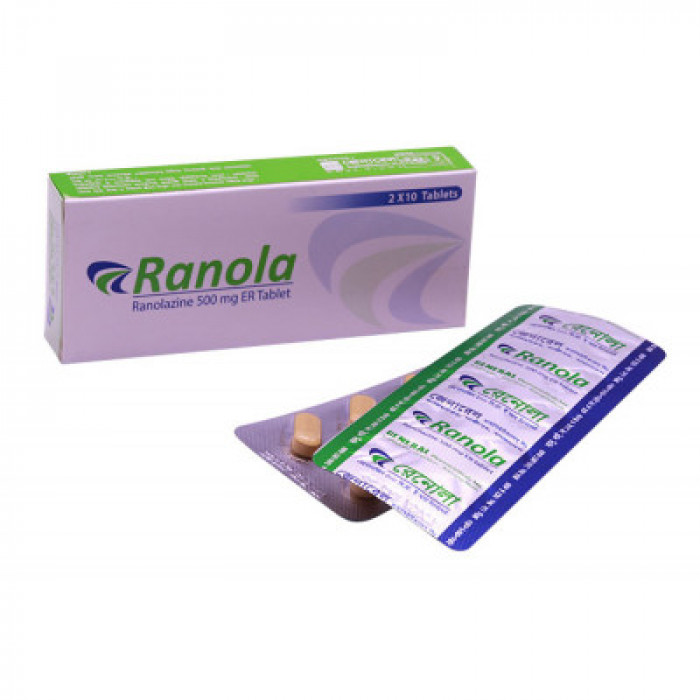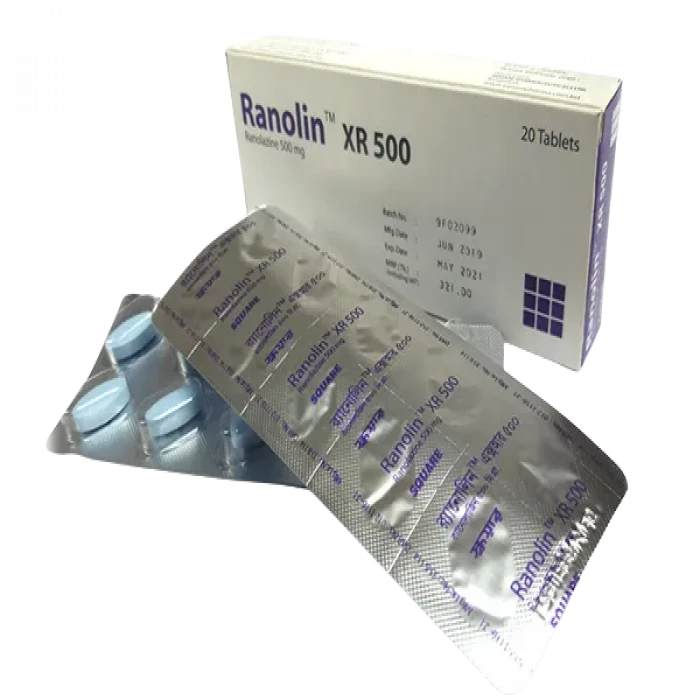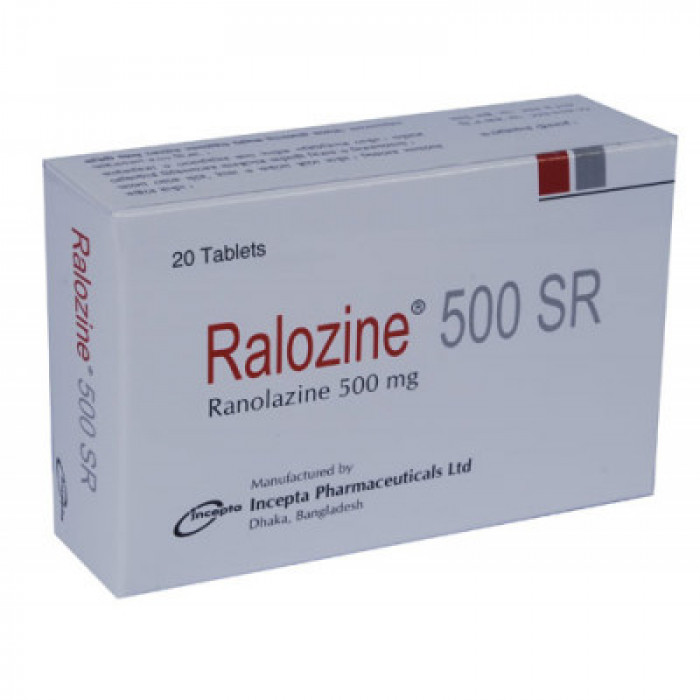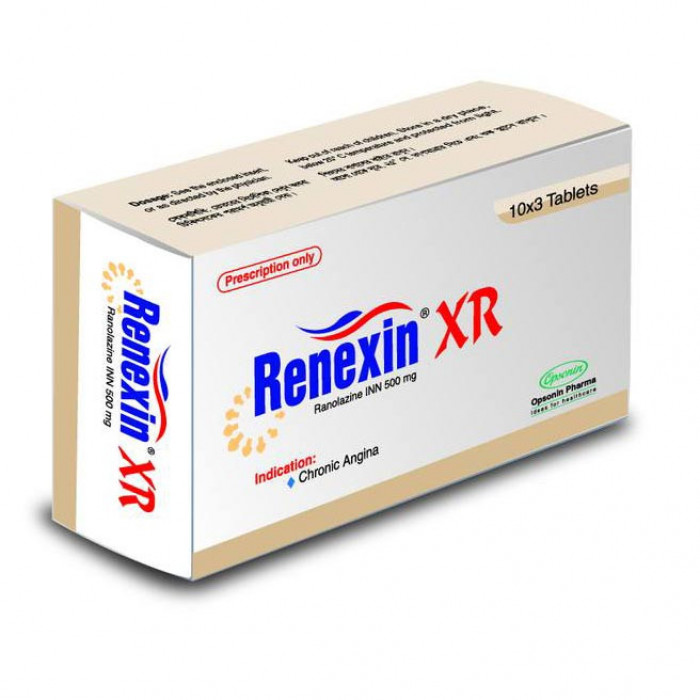
✔ 100% Authentic Product
👁️ Currently Viewing 1375
100% Genuine Products, Guaranteed
Safe & Secure Payments, Always
Fast, Secure & Efficient Delivery
Proper Packaging
 Cash on Delivery - All over Bangladesh
Cash on Delivery - All over Bangladesh Regular Delivery - 12-24 Hours, Dhaka City*
Regular Delivery - 12-24 Hours, Dhaka City* Regular Delivery - 24-48 Hours, All Over Bangladesh*
Regular Delivery - 24-48 Hours, All Over Bangladesh* ফ্রি ডেলিভারিঃ - ৯৯৯ টাকা+ অর্ডারে, ঢাকা
শহরে
ফ্রি ডেলিভারিঃ - ৯৯৯ টাকা+ অর্ডারে, ঢাকা
শহরে ফ্রি ডেলিভারিঃ - ২৯৯৯ টাকা+ অর্ডারে, ঢাকার
বাহিরে
ফ্রি ডেলিভারিঃ - ২৯৯৯ টাকা+ অর্ডারে, ঢাকার
বাহিরে
✅ Description:
Indications
The drug ranolazine is used to treat persistent angina. Beta-blockers, nitrates, calcium channel blockers, antiplatelet treatment, lipid-lowering therapy, ACE inhibitors, and angiotensin receptor blockers may all be used with ranolazine. On maximum dosages of amlodipine, it has been proven to reduce angina episodes in individuals with coronary artery disease. Because ranolazine prolongs the QT interval, it should only be used in individuals who have not had a satisfactory response to other antianginal medications. In women, the effect on angina rate and exercise tolerance appeared to be less than in men.
Pharmacology
Ranolazine possesses anti-ischemic and anti-langinal actions that are independent of heart rate or blood pressure decreases. Ranolazine's specific method of action is unclear. At therapeutic doses, ranolazine can block the cardiac late sodium current (INa). The link between this inhibition and angina symptoms, however, is unknown.On the surface electrocardiogram, ranolazine prolongs the QT interval via inhibiting IKr, which prolongs the ventricular action potential.
Dosage & Administration
Initiate Ranolazine dosing at 500 mg twice daily and increase to 1000 mg twice daily, if needed, based on clinical symptoms. Take Ranolazine with or without meals. Swallow Ranolazine tablets whole; do not crush, break or chew. The maximum recommended daily dose of Ranolazine is 1000 mg twice daily. If a dose of Ranolazine is missed, take the prescribed dose at the next scheduled time; do not double the next dose.
Interaction
CYP 3A Inhibitors: Do not use Ranolazine with strong CYP 3A inhibitors. With moderate CYP 3A inhibitors (e.g., diltiazem, verapamil, erythromycin) limit maximum dose of ranolazine to 500 mg twice daily.
CYP 3A Inducers: Do not use Ranolazine with inducers.
P-gp Inhibitors (e.g., Cyclosporin): May need to lower the Ranolazine dose based on clinical dose.
Drugs transported by P-gp or metabolized by CYP2D6 (eg., digoxin, TCA): May need reduced doses of these drugs when used with ranolazine.
Contraindications
Ranolazine is not recommended for those who have a history of QT prolongation. Hepatic impairment is a condition in which the liver is damaged. Taking medications that lengthen the QT interval. CYP3A inhibitors, such as ketoconazole, itraconazole, clarithromycin, nefazodone, nelfinavir, ritonavir, indinavir, and saquinavir, as well as diltiazem, are used.
Side Effect
Cardiac problems include bradycardia and palpitations.
Tinnitus, vertigo, and other ear and labyrinth disorders
Abdominal discomfort, dry mouth, and vomiting are all symptoms of gastrointestinal disorders.
Peripheral edema is one of the most common side effects at the administrative site.
Dyspnea is a symptom of respiratory, thoracic, and mediastinal disorders.
Hypotension and orthostatic hypotension are two types of vascular disorders.
Pregnancy & Lactation
Pregnancy Classification C. There aren't enough research on ranolazine's effects on the growing fetus. In pregnant women, there aren't enough well-controlled research. When the possible benefit to the patient outweighs the potential danger to the fetus, ranolazine should be administered during pregnancy. Ranolazine is not known to be excreted in human milk. Because of the risk of significant side effects from ranolazine in nursing infants, a choice should be taken whether to stop breastfeeding or stop taking Ranolazine, taking into consideration the drug's value to the mother.
Precautions & Warnings
Ranolazine prolongs the QTc interval and inhibits QTc in a dose-dependent manner. In a patient group with an acute coronary syndrome, there was no evidence of an elevated risk of proarrhythmia or sudden death.
Because co-administration of ranolazine with digoxin raises digoxin plasma concentrations by around 1.5-fold, the digoxin dose may need to be decreased as a result. When ranolazine is co-administered, the dosage of other P-gp substrates may need to be decreased as well. When taking ranolazine with P-gp inhibitors like ritonavir or cydosporine, it's best to be cautious.
Therapeutic Class
Other Anti-anginal & Anti-ischaemic drugs
Storage Conditions
Ranolazine pills should be stored at 25°C, with a 15° to 30°C temperature range allowed. Light and moisture should be kept at bay.
⚠️Disclaimer:
At ePharma, we’re committed to providing accurate and accessible health information. However, all content is intended for informational purposes only and should not replace medical advice from a qualified physician. Please consult your healthcare provider for personalized guidance. We aim to support, not substitute, the doctor-patient relationship.










